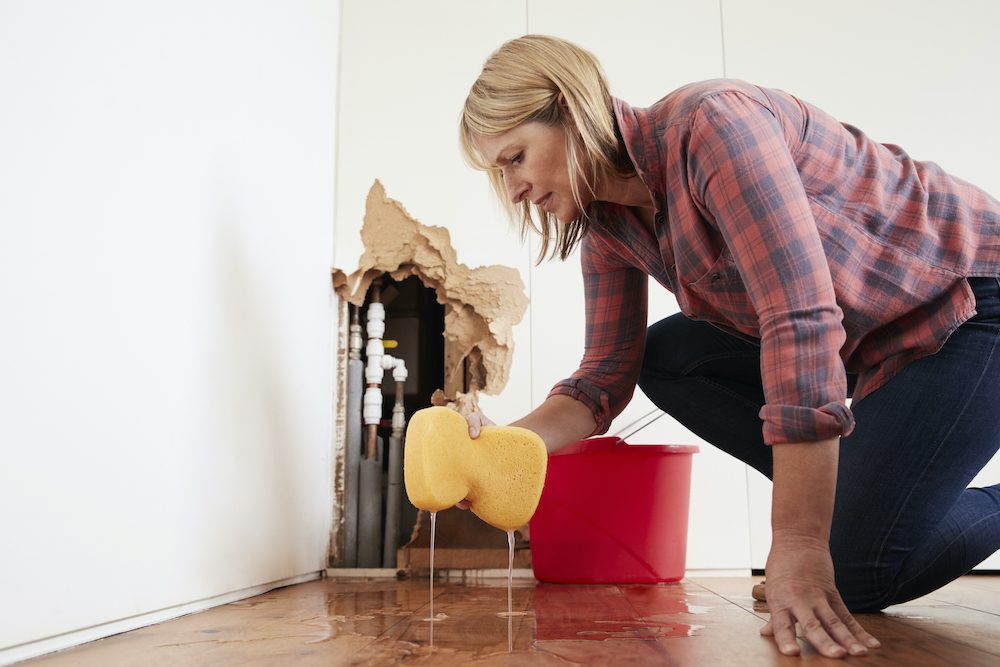Guide To Water Leakage Detection At Home
Guide To Water Leakage Detection At Home
Blog Article
This article below relating to Detecting hidden plumbing leaks is really insightful. Read it for yourself and decide what you think about it.

Early detection of dripping water lines can mitigate a potential disaster. Aside from saving you cash, it will lessen the worry and frustration. The minute you locate a leak, calling your plumber for repair services is the most effective remedy. Some little water leakages might not be noticeable. If you can not detect it with your naked eyes, below are some hacks that aid.
1. Analyze the Water Meter
Every home has a water meter. Inspecting it is a guaranteed way that assists you discover leakages. For starters, shut off all the water sources. Make certain nobody will purge, utilize the faucet, shower, run the cleaning device or dishwasher. From there, most likely to the meter and watch if it will transform. Since nobody is using it, there must be no activities. That suggests a fast-moving leakage if it relocates. Similarly, if you discover no changes, wait a hr or 2 and also inspect back once again. This suggests you may have a slow-moving leak that can even be underground.
2. Check Water Intake
Analyze your water costs and track your water consumption. As the one paying it, you must notice if there are any type of discrepancies. If you detect sudden changes, in spite of your intake being the same, it suggests that you have leakages in your plumbing system. Bear in mind, your water bill need to fall under the very same range on a monthly basis. An abrupt spike in your costs indicates a fast-moving leak.
A steady rise every month, also with the exact same habits, reveals you have a slow leak that's additionally slowly rising. Call a plumber to thoroughly examine your building, especially if you really feel a cozy area on your floor with piping underneath.
3. Do a Food Coloring Examination
When it comes to water usage, 30% originates from commodes. Test to see if they are running effectively. Decline flecks of food color in the tank as well as wait 10 mins. If the shade in some way infiltrates your dish throughout that time without flushing, there's a leakage in between the storage tank as well as bowl.
4. Asses Exterior Lines
Do not fail to remember to inspect your outdoor water lines as well. Test faucets by attaching a yard hose. Must water seep out of the link, you have a loose rubber gasket. Replace this and also guarantee all links are limited. If you have actually obtained a lawn sprinkler, it will aid get it professionally examined as well as preserved yearly. One small leakage can squander lots of water and also increase your water expense.
5. Evaluate and Analyze the Scenario
Home owners must make it a practice to examine under the sink counters as well as even inside cupboards for any bad odor or mold and mildew growth. These 2 red flags suggest a leak so timely focus is needed. Doing regular evaluations, also bi-annually, can save you from a major issue.
If you know your house is currently old, maintain a careful eye on your heating systems, hose pipes, pipelines etc. Look for discolorations and compromising as many devices and also pipelines have a life span. They will likewise naturally deteriorate due to tear and also use. Don't wait for it to rise if you believe dripping water lines in your plumbing system. Call a professional plumber right now so you don't wind up with a terrible mess in your house.
Early detection of dripping water lines can minimize a potential catastrophe. Some little water leakages may not be visible. Examining it is a surefire way that assists you find leakages. One little leakage can throw away lots of water as well as increase your water costs.
If you believe dripping water lines in your plumbing system, do not wait for it to rise.
WARNING SIGNS OF WATER LEAKAGE BEHIND THE WALL
PERSISTENT MUSTY ODORS
As water slowly drips from a leaky pipe inside the wall, flooring and sheetrock stay damp and develop an odor similar to wet cardboard. It generates a musty smell that can help you find hidden leaks.
MOLD IN UNUSUAL AREAS
Mold usually grows in wet areas like kitchens, baths and laundry rooms. If you spot the stuff on walls or baseboards in other rooms of the house, it’s a good indicator of undetected water leaks.
STAINS THAT GROW
When mold thrives around a leaky pipe, it sometimes takes hold on the inside surface of the affected wall. A growing stain on otherwise clean sheetrock is often your sign of a hidden plumbing problem.
PEELING OR BUBBLING WALLPAPER / PAINT
This clue is easy to miss in rooms that don’t get much use. When you see wallpaper separating along seams or paint bubbling or flaking off the wall, blame sheetrock that stays wet because of an undetected leak.
BUCKLED CEILINGS AND STAINED FLOORS
If ceilings or floors in bathrooms, kitchens or laundry areas develop structural problems, don’t rule out constant damp inside the walls. Wet sheetrock can affect adjacent framing, flooring and ceilings.
https://www.servicemasterbyzaba.com/blog/how-to-detect-water-leakage-in-walls/

As a devoted person who reads on Finding hidden leaks, I assumed sharing that short article was essential. Do you know another person who is excited by the subject? Do not hesitate to share it. We appreciate reading our article about Top leak detection hacks.
Report this page